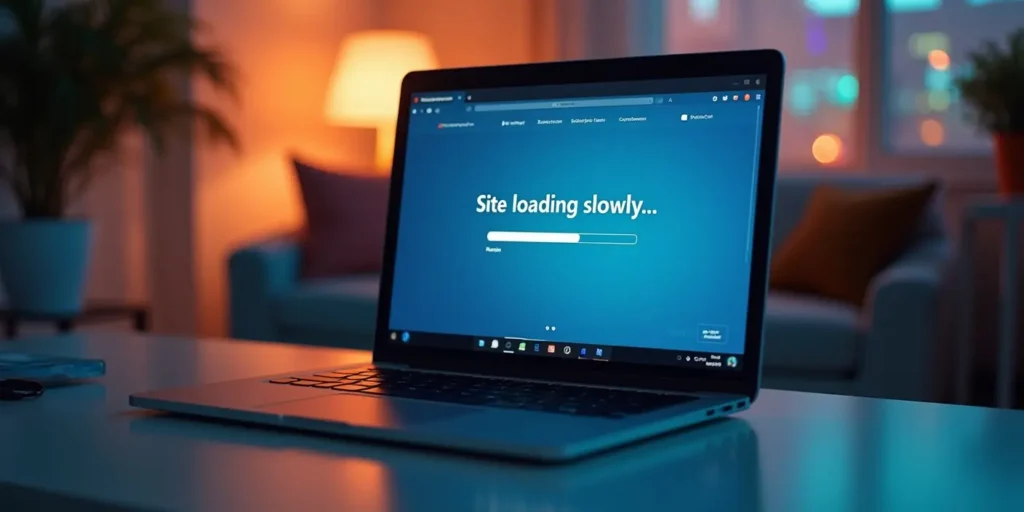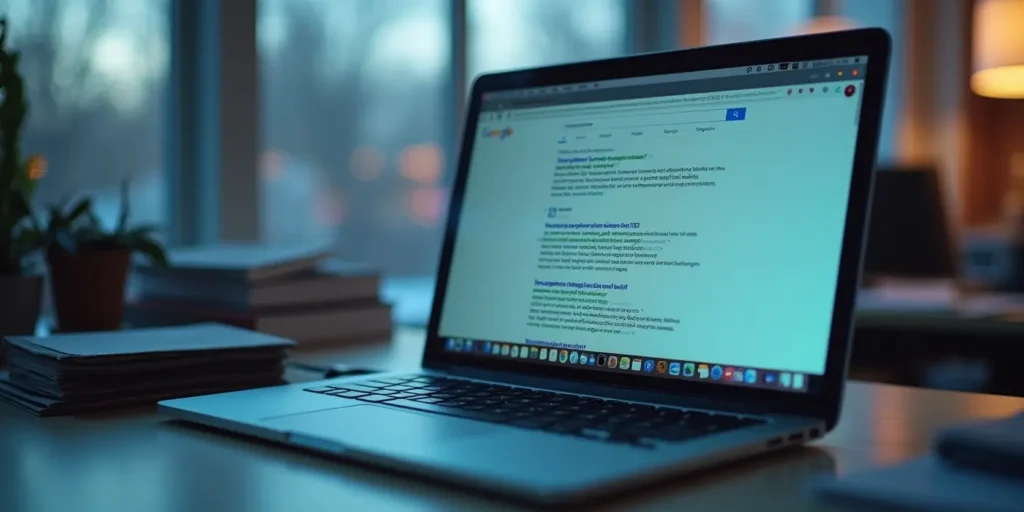
If you’ve been wondering why my website is not getting leads, you’re not alone. Many small business owners spend time and money building a nice-looking website, only to be disappointed when it doesn’t bring in new customers. It’s frustrating, especially when you know your product or service is solid.
In this blog, I’ll walk you through the most common reasons your site might not be performing and more importantly, how to fix them. These are real-world problems I’ve helped business owners solve. By the end, you’ll have a clear idea of what’s missing from your site and what you can do today to get better results.
Your website looks good but doesn’t convert
A lot of websites are designed to look beautiful. That’s not a bad thing. But if the design doesn’t support a clear message, visitors won’t know what action to take. Your site may be visually impressive but if it doesn’t guide people, they’ll leave without doing anything.
💡 A strong homepage answers what you offer, who it’s for, and how it helps.
A strong homepage answers three things right away. What you offer, who it’s for, and how it helps. If someone lands on your homepage and has to scroll or search to figure that out, that’s a problem. People move fast online. You have just a few seconds to make them feel like they’re in the right place.
Try this. Open your homepage on a fresh screen and look at it like a customer. Is it clear what you do? Do you see one strong call to action like “Book a call” or “Start here”? Are there too many buttons or sections competing for attention?
Clarity wins every time. When you remove confusion, people are more likely to trust you. If you confuse them or make them work too hard, they’re gone.
Your site is slow to load and it’s driving people away

You might not realize how important website speed is until you test it. A slow-loading website turns people off immediately. Most visitors expect a site to load in under three seconds. Anything longer and they start to lose patience.
If you’ve been asking why my website is not getting leads, speed could be a silent killer. You may think your site is fine because it loads quickly on your device. But that’s likely because your browser has stored it. First-time visitors experience something different, especially if they’re using mobile data.
A slow site can be caused by large images, too many plugins, outdated themes, or low-quality hosting. These are technical issues, but the solution doesn’t have to be complicated. You can test your speed using Google PageSpeed Insights. It’s a free tool that shows you exactly what needs to be fixed.
Speed also affects how your site ranks on Google. Faster websites rank better and keep people on the page longer. If your site is slow, people will leave before they even see your offer. That means no leads, no calls, and no sales.
Your website isn’t mobile-friendly
Today, more than half of your website visitors are using their phone. If your site doesn’t look and function properly on mobile, you’re losing opportunities without realizing it. A mobile-unfriendly site frustrates people. They can’t read the text, click the buttons, or find what they need.
Many small business websites were built years ago when desktop traffic was the focus. But things have changed. Now, Google actually ranks your site based on how it performs on mobile. This is called mobile-first indexing.
Take a few minutes and test your site on different phone sizes. Is the text readable without zooming in? Do images adjust properly? Can you tap the buttons without missing them? Is the menu easy to open and navigate?
If your site fails any of those, it needs improvement. A responsive design will automatically adjust to any screen size. It keeps your layout clean and your message clear, whether someone is on a phone, tablet, or computer.
One of the most common complaints I hear is from business owners who say, “It looks fine on my laptop.” But remember, your customer is not sitting at your desk. They’re on the go, scrolling quickly, and deciding in seconds whether to stay.
You’re invisible on Google

This one is big. If people can’t find you, they can’t hire you. You might have the perfect website, but if it’s not showing up in search results, it’s not doing its job. That’s where search engine optimization comes in.
SEO helps Google understand who you are, what you do, and where you’re located. If you’ve ever searched for “plumber near me” or “best cafe in New York,” that’s local SEO in action. Your site should be doing the same for your business.
If you’re wondering why my website is not getting leads, it could be because you haven’t optimized for search. You need to use keywords your customers are searching for. You also need to update your site regularly with helpful content like blogs, tips, or guides.
Another big factor is having consistent contact information across platforms. Your Google Business Profile should match the info on your website. It builds trust and helps with rankings.
You don’t have to become an SEO expert. But ignoring search is like building a store and hiding it in the middle of the woods. If you want help making your business easier to find, visit Salt Web Designer and check out how we can help.
There’s no clear next step
Even when your site looks good and works well, it still needs to guide people. A visitor won’t automatically know what to do. They might be interested but if there’s no call to action, they’ll bounce.
A call to action tells people exactly what you want them to do next. Maybe it’s “Book a call,” “Send a message,” or “Get a quote.” Whatever it is, it needs to be clear and easy to find.
Place it near the top of your homepage. Repeat it once or twice on the same page. End your blog posts with it. Make sure your buttons stand out and use friendly language. Think of your site like a conversation. You greet them, explain what you offer, and then invite them to take the next step.
One simple fix that has helped many of my clients is changing their button text. Instead of “Submit,” try “Get My Free Estimate” or “Let’s Talk.” Those feel more personal and helpful.
And don’t forget to test your forms. A broken form is one of the worst ways to lose a lead. If someone fills out your form and it doesn’t go through, you’ll never know. I always recommend checking your form regularly and confirming it sends emails correctly.
💡 Not sure if your site is the problem?
Get a free website audit and find out what’s holding your site back.
👉 Request Your FREE Website Audit

Final thoughts
If you’ve been asking why my website is not getting leads, now you have a clearer picture. It might be because your message isn’t clear, your site is slow, or people can’t use it on their phones. Maybe you’re not showing up on Google, or you’re not asking people to take action.
All of these are fixable. Your website should be more than a digital brochure. It should be a tool that works for your business, even while you sleep. The changes don’t have to be overwhelming. Start with one area and build from there.
Want a site that actually helps you grow?
If you’re ready to fix your website and finally start getting leads, I’d love to help. Visit Salt Web Designer and let’s build a site that works as hard as you do.
📥 Want a clean, high-converting website?
Grab your free checklist or request a site audit to see what’s working (and what’s not).
👉 Download your FREE Checklist
FAQs
What are the main reasons why my website is not getting leads?
The top reasons include unclear messaging, slow speed, no mobile responsiveness, poor search visibility, and missing calls to action. Learn more at our services page.
How can I tell if my website is too slow?
You can test your site using Google PageSpeed Insights. If your site loads in more than three seconds, that’s likely hurting your lead generation.
Do I really need SEO if I get word-of-mouth clients?
Yes. SEO helps you reach new people who are searching online. Even if you get referrals, showing up on Google builds credibility and helps you grow.
What does a clear call to action look like?
It’s a button or message that tells the visitor what to do next. Examples include “Book a free call,” “Get a quote,” or “Start now.” It should stand out and be easy to click.
How do I know if my site works well on mobile?
Use your phone to browse your own site. Ask a friend to test it too. If text is hard to read, buttons are too small, or layout looks broken, it needs improvement. You can also visit our homepage for an example of a mobile-friendly layout.


3 thoughts on “Why My Website Is Not Getting Leads and How to Fix It”
Pingback: The Truth About Affordable Web Design Services
Pingback: How to Choose the Right Web Designer for Your Small Business in the USA - Salt Web Designer
Pingback: Web Design vs. DIY Builders: What Actually Gets Results - Salt Web Designer